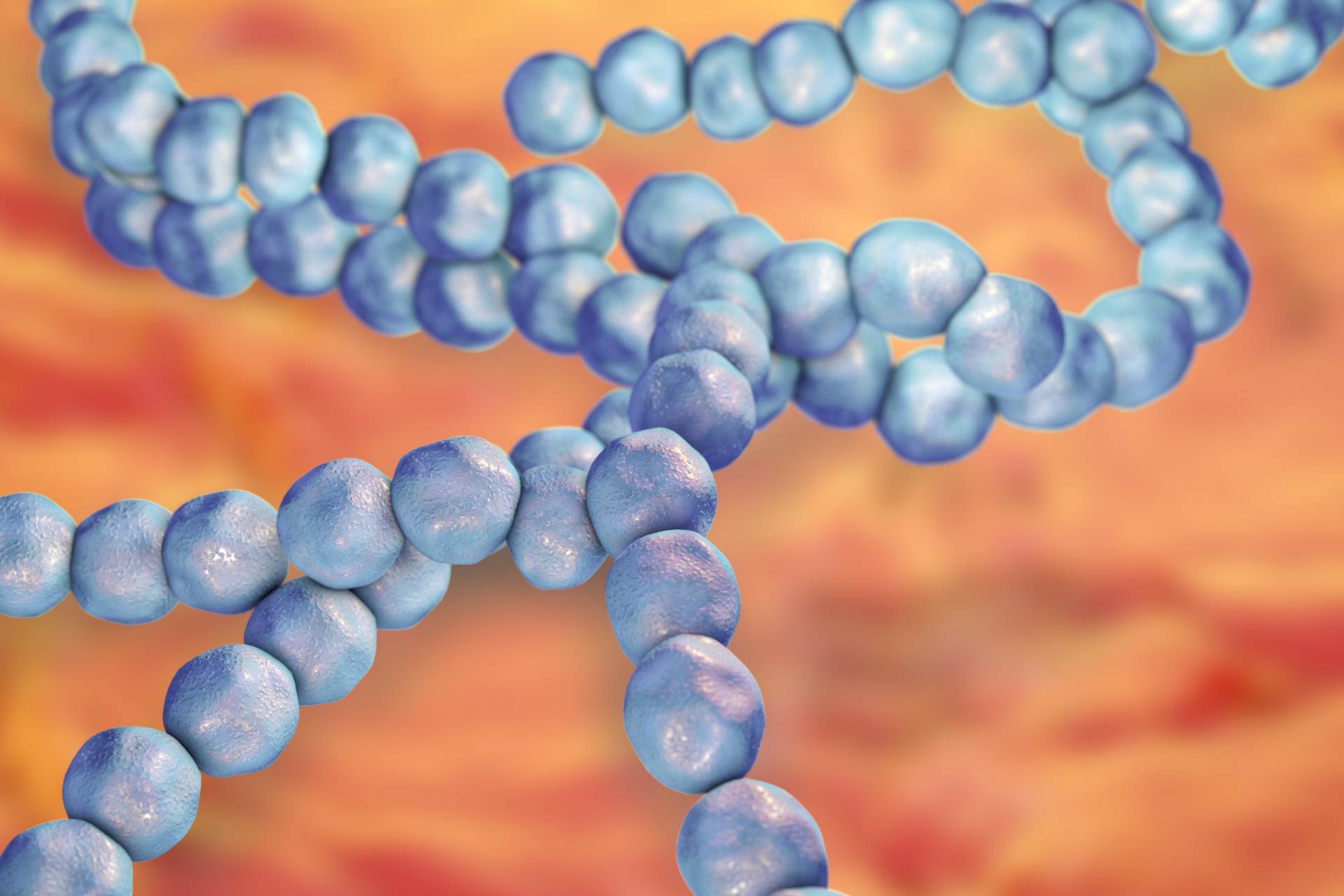• Competing microbes
• Inhibition model
What is already known on this topic
Streptococcus bacteria are common residents of mucosal surfaces in vertebrates, and they can cause opportunistic infections of the respiratory, digestive, and reproductive tracts — among other body sites. For example, Streptococcus mutans can cause dental caries as well as a life-threatening infection of the inner lining of the heart’s chambers and valves.What this research adds
A particular strain of S. mutans is able to detect and respond to cell population density and produce a peptide that inhibits the growth of other streptococci. The peptide, which the researchers called tryglysin, doesn’t appear to block the growth of other microbes such as Enterococcus faecalis or Lactococcus lactis. The team identified a peptide with similar inhibitory properties produced by S. ferus, a microbe found in the oral cavity of animals such as rats and pigs, which suggests that these peptides help streptococci compete in the oral niche.Conclusion
The findings suggest that S. mutans produces tryglysin in its oral niche to inhibit the growth of competing species, including other streptococci that could cause opportunistic infections.
Streptococcus bacteria are common residents of mucosal surfaces in vertebrates, and they can cause opportunistic infections of the respiratory, digestive, and reproductive tracts — among other body sites. A new study suggests that some mouth-dwelling streptococci produce a molecule that inhibits the growth of competing species, including other streptococci that could cause opportunistic infections.
The findings, published in mBio, hint at how streptococci compete in the oral niche and could open new avenues for the development of therapies against these pathogens.
Scientists have known that many bacteria use a process of cell–cell communication called ‘quorum sensing’, which allows the microbes to detect and respond to cell population density and regulate the expression of specific genes. Recent studies have shown that a family of proteins known as transcriptional regulators respond to quorum-sensing signals in streptococci and other bacteria. In particular, researchers have found that, in response to quorum-sensing signals, a set of adjacent genes produces a variety of peptides, whose functions remain largely unknown.
Mohammad Seyedsayamdost at the University of Illinois at Chicago, Michael Federle at Princeton University and their colleagues set out to investigate the biological relevance of some of these peptides in a specific strain of Streptococcus mutans, a microbe that can cause dental caries as well as a life-threatening infection of the inner lining of the heart’s chambers and valves.
Competing microbes
The researchers found that S. mutans uses a quorum-sensing system that ultimately regulates the expression of a cluster of genes that produce a short peptide, which the researchers called tryglysin.
Tryglysin appeared to act as a bacteriostatic molecule, inhibiting the growth of streptococci and other microbes. However, tryglysin didn’t affect the proliferation of bacteria such as S. pyogenes, Lactococcus lactis, and Enterococcus faecalis, the team found.
Tryglysin inhibited microbes including S. mitis, S. oralis, and S. pneumoniae, which are known to block the proliferation of S. mutans itself. “Inhibiting the growth of these competitor strains could be advantageous to S. mutans,” the researchers say.
Inhibition model
The team identified a peptide with similar inhibitory properties produced by S. ferus, a microbe found in the oral cavity of animals such as rats and pigs, which suggests that these peptides help streptococci compete in the oral niche.
Based on their findings, the researchers developed a model according to which, upon receiving a yet-unknown signal, S. mutans induces the production of a molecule called SHP that is exported and then imported into nearby cells. In these cells, SHP activates the transcription of two sets of adjacent genes, one of which directs the production of tryglysin. Tryglysin can be exported out of the cell, where it inhibits the proliferation of neighboring competing bacteria.
However, the researchers note, it is possible that tryglysin could serve additional functions. To answer this question, future work should assess how tryglysin alters an oral community dominated by streptococci, the authors say.









